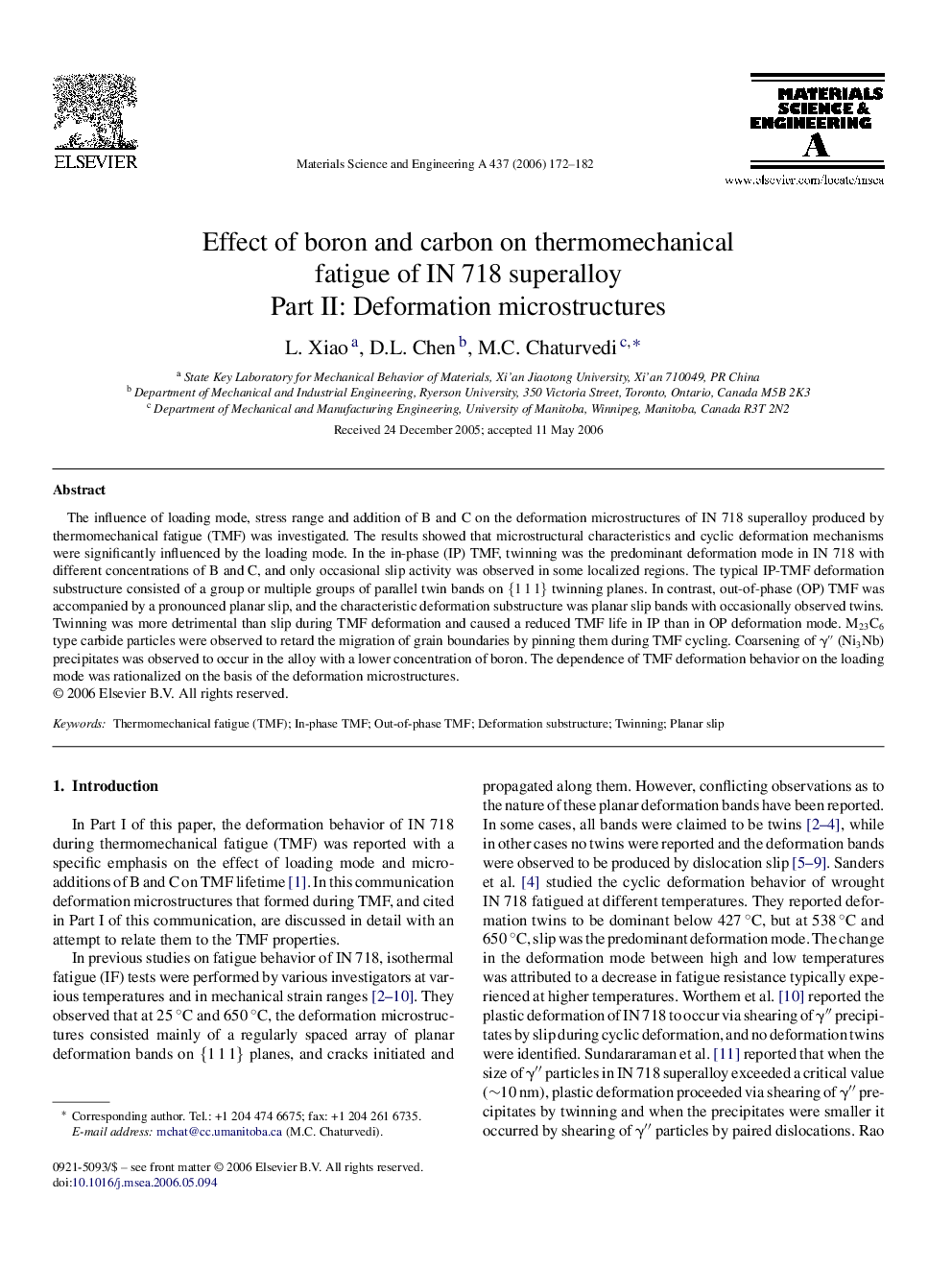| Article ID | Journal | Published Year | Pages | File Type |
|---|---|---|---|---|
| 1584841 | Materials Science and Engineering: A | 2006 | 11 Pages |
Abstract
The influence of loading mode, stress range and addition of B and C on the deformation microstructures of IN 718 superalloy produced by thermomechanical fatigue (TMF) was investigated. The results showed that microstructural characteristics and cyclic deformation mechanisms were significantly influenced by the loading mode. In the in-phase (IP) TMF, twinning was the predominant deformation mode in IN 718 with different concentrations of B and C, and only occasional slip activity was observed in some localized regions. The typical IP-TMF deformation substructure consisted of a group or multiple groups of parallel twin bands on {1 1 1} twinning planes. In contrast, out-of-phase (OP) TMF was accompanied by a pronounced planar slip, and the characteristic deformation substructure was planar slip bands with occasionally observed twins. Twinning was more detrimental than slip during TMF deformation and caused a reduced TMF life in IP than in OP deformation mode. M23C6 type carbide particles were observed to retard the migration of grain boundaries by pinning them during TMF cycling. Coarsening of γⳠ(Ni3Nb) precipitates was observed to occur in the alloy with a lower concentration of boron. The dependence of TMF deformation behavior on the loading mode was rationalized on the basis of the deformation microstructures.
Related Topics
Physical Sciences and Engineering
Materials Science
Materials Science (General)
Authors
L. Xiao, D.L. Chen, M.C. Chaturvedi,
